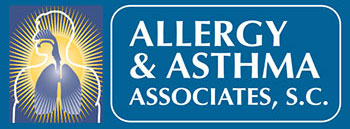According to Childrenshospital.org, about 2 million people in the United States are allergic to bee stings. There are 50 deaths each year due to an anaphylactic(severe life-threatening) allergic reaction to a bee sting or any kind of stinging insect such as yellow jackets, hornets and wasps.
There is a way to prevent these deaths. Learn more about what anaphylaxis is and what you should do if you or a loved one has an anaphylactic episode.
Learn from Our Printable Infographic 
Anaphylaxis
Anaphylaxis is a life-threatening allergic reaction. Basically, your immune system overreacts to an allergen and releases chemicals that contribute to horrible allergy symptoms. Symptoms including throat swelling, difficulty breathing, hives, hypotension, fainting and shock.
After you’ve experienced anaphylaxis from a bee sting you’re much more likely to experience another anaphylactic reaction again; typically, the reaction will be more severe and much quicker. If you are far from a medical facility the symptoms could progress and worsen without help.
Remedies for a Bee Sting – Local Reaction
A bee sting isn’t fun for anyone. It hurts due to the toxin. Depending on where you are when you are stung there are different treatment options for the pain and slight swelling from a sting.
- apply ice to the sting site
- mix baking soda and water to make a paste then apply to sting site
- if you’re outside, putting mud on the sting site can relieve symptoms
- you can take a Benadryl to help with the swelling
Bee Sting – Systemic Allergic Reaction Symptoms
- trouble breathing
- difficulty swallowing
- rapid pulse
- extreme swelling/hives
- dizziness/lightheadedness
- feeling of restlessness and anxiety
You need to get the the hospital as quickly as possible to be treated for an allergic reaction to a bee sting if you have any of the above symptoms. Local reactions require regular first aid. If you are not sure if your reaction was a local one due to the toxin or a true allergic and/or anaphylactic reaction you should call your doctor right away.
After you’ve been treated, it’s important to know what to do after an allergic reaction to a bee sting and how you can save yourself or a loved one.
Treatment Right After the Sting
At the hospital, the doctor will likely administer epinephrine or adrenaline to stop the allergic reaction. If the reaction was severe you might need other treatments such as IV fluids and oxygen to help your body heal.
You might have to stay the night in the hospital to make sure everything is okay.
After You’ve Experienced an Allergic Reaction or Anaphylaxis
After you’ve healed, it’s important to visit your local allergist. You need to have an EpiPen (epinephrine) and, in order to get that prescription, you need to visit with your doctor.
After you visit your doctor, talk with your family and friends about your bee allergy. Show them where your EpiPen is located and how to use it. If you have a child with a bee allergy make sure their school, coaches, and friend’s parents know about it and what they should do if your child becomes stung. If you had an anaphylactic (severe life-threatening) allergic reaction there is a life-saving preventative treatment to actually reduce the allergy by immunizing you against the venom through a series of allergy shots. The shots are highly effective and have been available for many,many decades. Taking care of your stinging insect allergy will also give you peace of mind and the freedom to come and go in the great outdoors as you please.
Please contact us if you’d like more information
Support
Find support after your anaphylactic episode. Foodallergy.org has this great resource to find a support group near you. The American Academy of Allergy, Asthma, and Immunology Facebook and Twitter.


